blog
Book Review: The Sacrifice Zone by Eddo Hartmann
Kazakhstan is the largest country in Central Asia and was an important republic of the Soviet Union until 1991. It is probably due to its size and low population density that parts of this territory were used as testing grounds during the Cold War in utmost secrecy. The Sacrifice Zone deals with the subject of nuclear experiments conducted by the Soviet Union on the territory of the Kazakh Soviet Socialist Republic. At the Semipalatinsk site, in the immediate vicinity of the city of Kurchatov (in northwestern Kazakhstan), 468 tests were carried out in 40 years of operation (343 underground and 125 atmospheric) with a total yield equivalent to more than 2,500 of the bombs dropped by the US Army on Hiroshima in 1945. The place, also known as “The Polygon”, officially covered 18,400 square kilometers of land, but radioactive clouds and gas leaks are believed to have contaminated 304,000 square kilometers in eastern Kazakhstan. An area the size of Poland. For decades, and with no consideration for the local population, the area has been an unfortunate setting for the most destructive nuclear tests ever carried out on the Earth’s surface. Eddo Hartmann traveled throughout Kazakhstan, between May 2018 and June 2023, to develop The Sacrifice Zone. The work is composed of 3 types of photos: environmental portraits, abstract, and infrared.
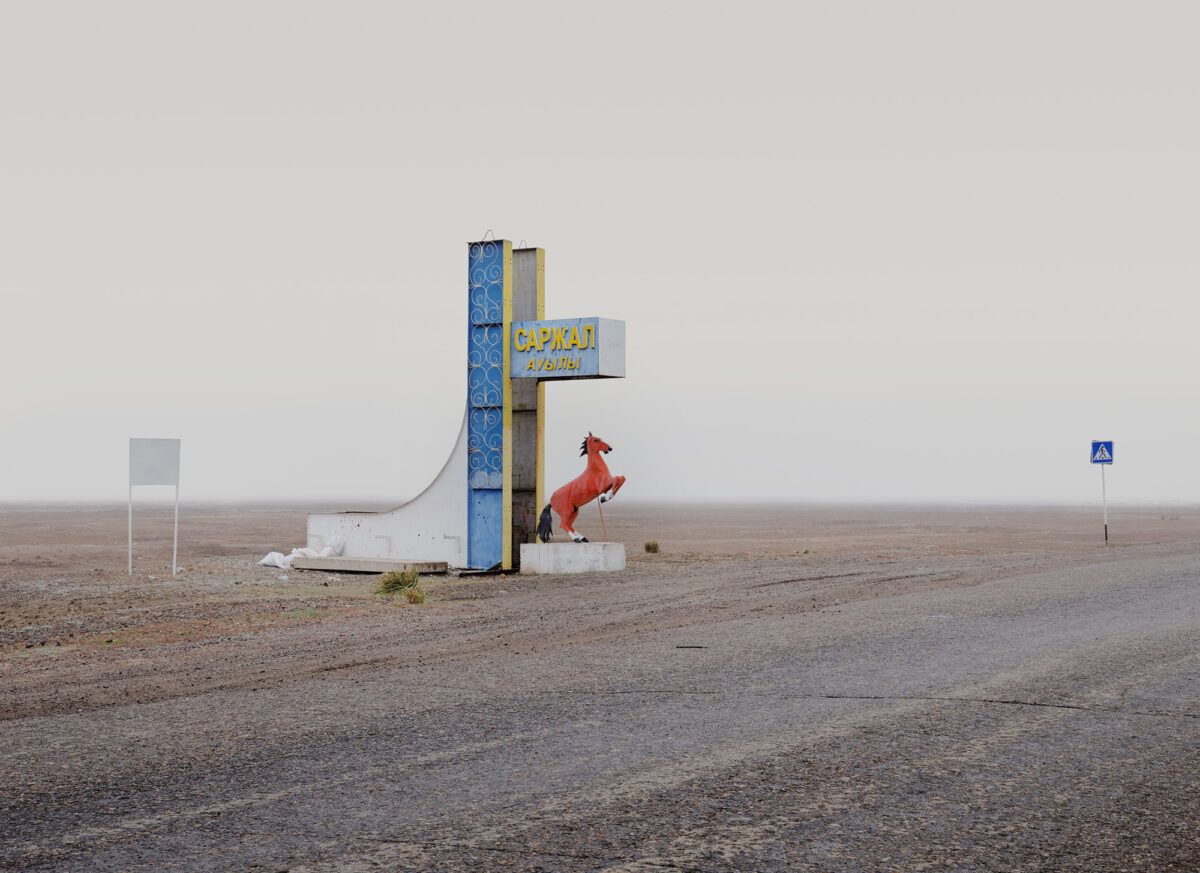
Red horse © Eddo Hartmann
Portraits of the inhabitants of the affected areas, and landscapes that bear traces of these past events, form the basis of the story. There are elderly people who are living witnesses of the nuclear experiments. We also find young people who have developed genetic diseases due to radiation. And we see modern settlers who, if not yet affected, remain constantly at risk as they farm in the contaminated areas, but who cannot or do not want to change their lives. Then there are the portraits of those people who explore the contaminated territory in search of metal or other objects to sell. The so-called “scavengers.”
In these portraits, the human figure is always in relation to the background, usually represented by ruined buildings or fields, which also serve as an integral part of the story. The people are depicted at full height and are the focus of each image, even if they only occupy a small part of the frame. To further enhance the subjects and increase, by contrast, the decay of the background, the portraits are deliberately staged through the use of artificial light. But, overall, the images are extremely balanced.
“The experience of creating this work made a big impression on me. The images look empty and always desolated. It took 5 long years to create it and 5 expeditions though this vast land which is quite hard to cross. During this time, I made friends and was often saddened by what I saw. I was emotionally touched by many stories and that’s also the reason I created the story in the way I did. But in my photography I never want to become “sentimental”. So no close ups of sad faces or details of lost children toys etc. Cliches of telling a sad story. In the end I was impressed by the people I met and how they could live in these hard circumstances.”
[Eddo Harmann]
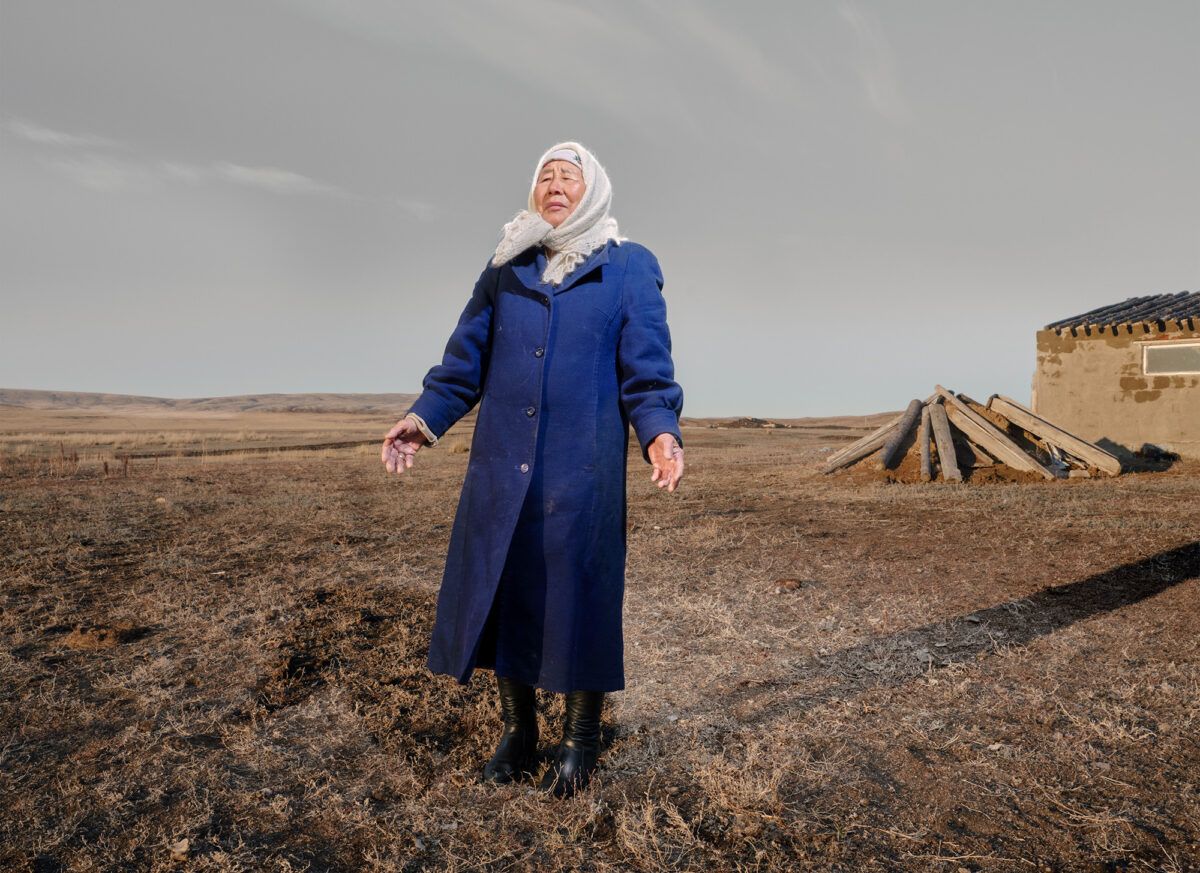
Rising mushrooms © Eddo Hartmann
A series of aerial photographs of the areas most affected by the tests at a geophysical level alternates with the group of portraits and landscapes. Large craters, often filled with lakes, and “lunar” shapes represented in black and white, transmit a rhythm to the project. They create an interesting contrast between reality and science fiction. Between portraits and, precisely, abstracts.
Hartmann’s reflection takes on (literally) different hues, in comparison with nature, through infrared photography. The color scheme of infrared photography comes from the famous Aerochrome film developed by Kodak in the 1940s, originally for military and scientific purposes. The film is sensitive to infrared light, a part of the spectrum invisible to the naked eye. The chlorophyll of the green foliage within the landscape reflects it intensely. This makes it stand out with a red hue. Local scientists use infrared technology to assess the condition of contaminated sites. Green vegetation reflects a significant amount of infrared light, allowing for nuanced analysis of environmental health. The different shades of reflection provide valuable information about the overall toxicity of this irradiated landscape.
Hartmann is using infrared photography to portray the epicenter of the testing area. This area, difficult to reach, is accessible only by wearing protective clothing. The anomalous coloration acquired, in the infrared photography, by the vegetation reveals its potential toxicity and, in a certain sense, is so unnatural that it helps the observer to consider artificial elements that, otherwise, would pass into the background.
“The first time I entered the “experimental field” (this is where I made most IR images) in a special suit with a Geiger counter around my neck, it felt like I was on another planet. Everything I saw looked like strange decors from old science fiction movies form the 50’s but it was all real and extremely dangerous which was scary. After a few years we discovered more locations and slowly we could also uncover stories that had been lost over the years which gave me the feeling of being part of an archeological expedition but after 5 years it became a bit to much for me and I knew that I had to finalize the project.”
[Eddo Harmann]
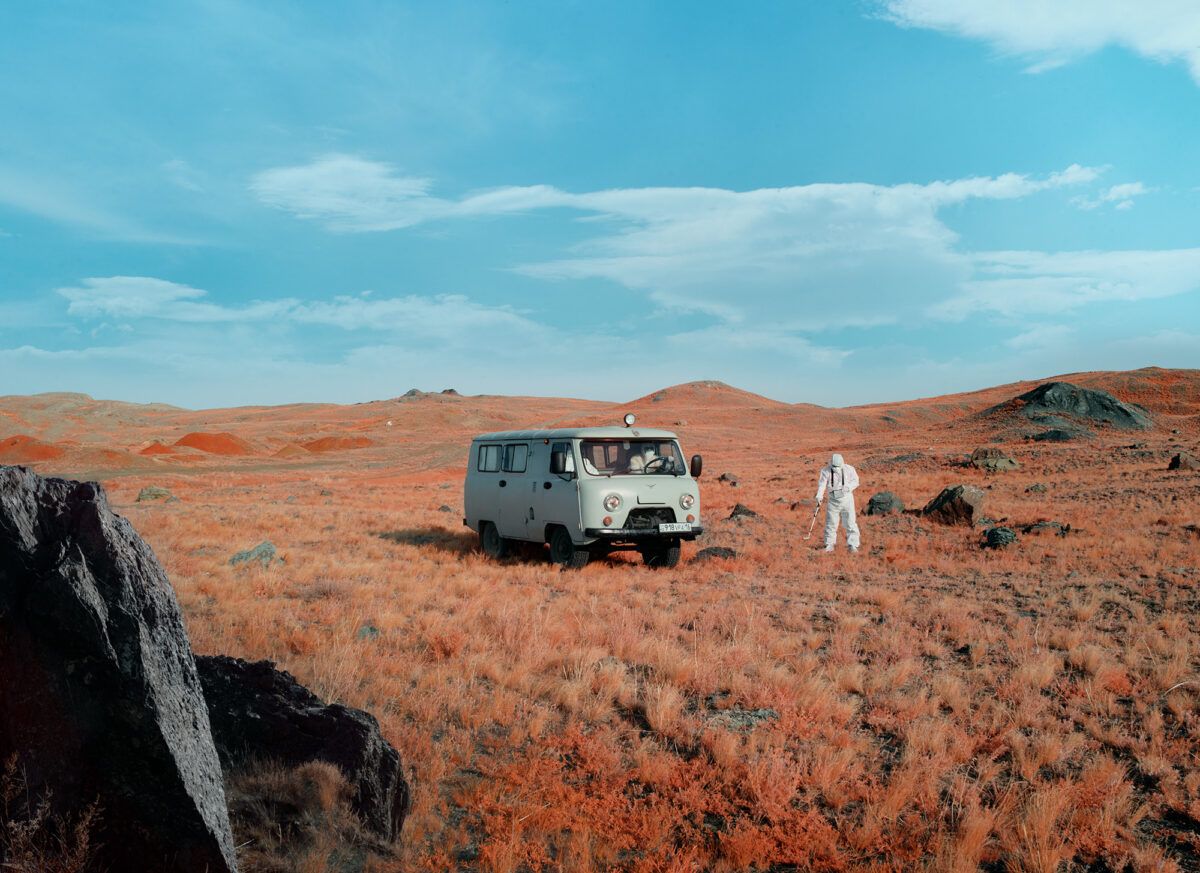
Grey bukhanka © Eddo Hartmann
The Sacrifice Zone has, in my opinion, an important historical value because, until today, there was no documentation of nuclear tests practiced in the Soviet Union, other than rare and blurry photographs of the regime. And, until the early 1990s, there was no adequate understanding of what was happening in the zone; even today, much remains unknown. Much information, considered classified material, is still classified. Eddo Hartmann portrays the witnesses of this part of human history: the places and, above all, the people. But also the subsequent generations and their way of dealing with and interpreting the past. According to the hearings of the Kazakh parliament, 1,323,000 people have been recognized as victims of nuclear tests. The Kazakh government has paid compensation to the Polygon victims and is still covering the costs of treatment.
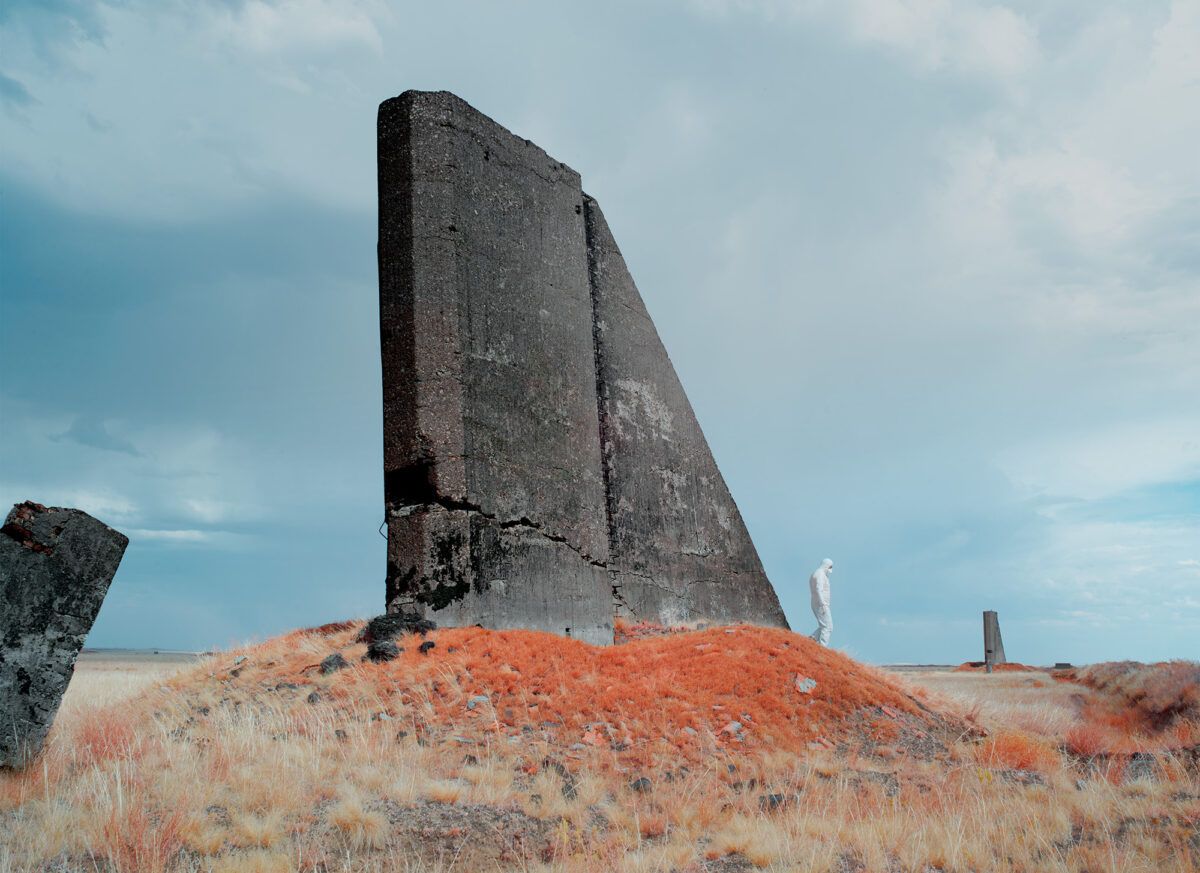
Black pylon © Eddo Hartmann
The Sacrifice Zone is a work that does not descend into catastrophic rhetoric but, keeping away from excessive aestheticization, helps us reflect on a topic, the nuclear issue, which has returned forcefully to the fore along with unpleasant Cold War atmospheres. A work that demonstrates how important photography’s ability to reveal is, both from a historical and scientific point of view.
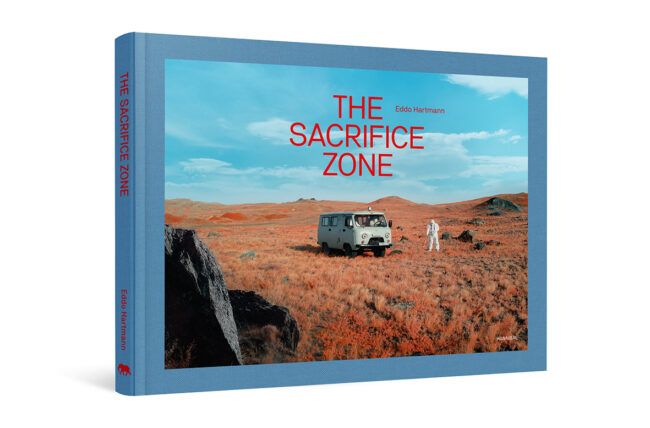
The Sacrifice Zone
by Eddo Hartmann
The book is published by Hannibal Books
November 2023
270 x 350 mm
144 pages
Hardcover
The Sacrifice Zone won the first prize at the 2023 Sony World Photography Award in the category “Landscape”. The book was published in conjunction with the exhibition of the same name at Huis Marseille in Amsterdam from 28 October 2023 to 3 March 2024. This project was made possible by the generous support of two foundations, Stichting Oog Op De Natuur and Stichting Stokroos.
Eddo Hartmann is a photographer I particularly appreciated for his documentary ability, for his way of relating to spaces and of conceiving and valorizing the “emptiness”, for his skill in stage photography. In this regard I also recommend his other works, including “Setting the Stage” and “Metal Sky”.
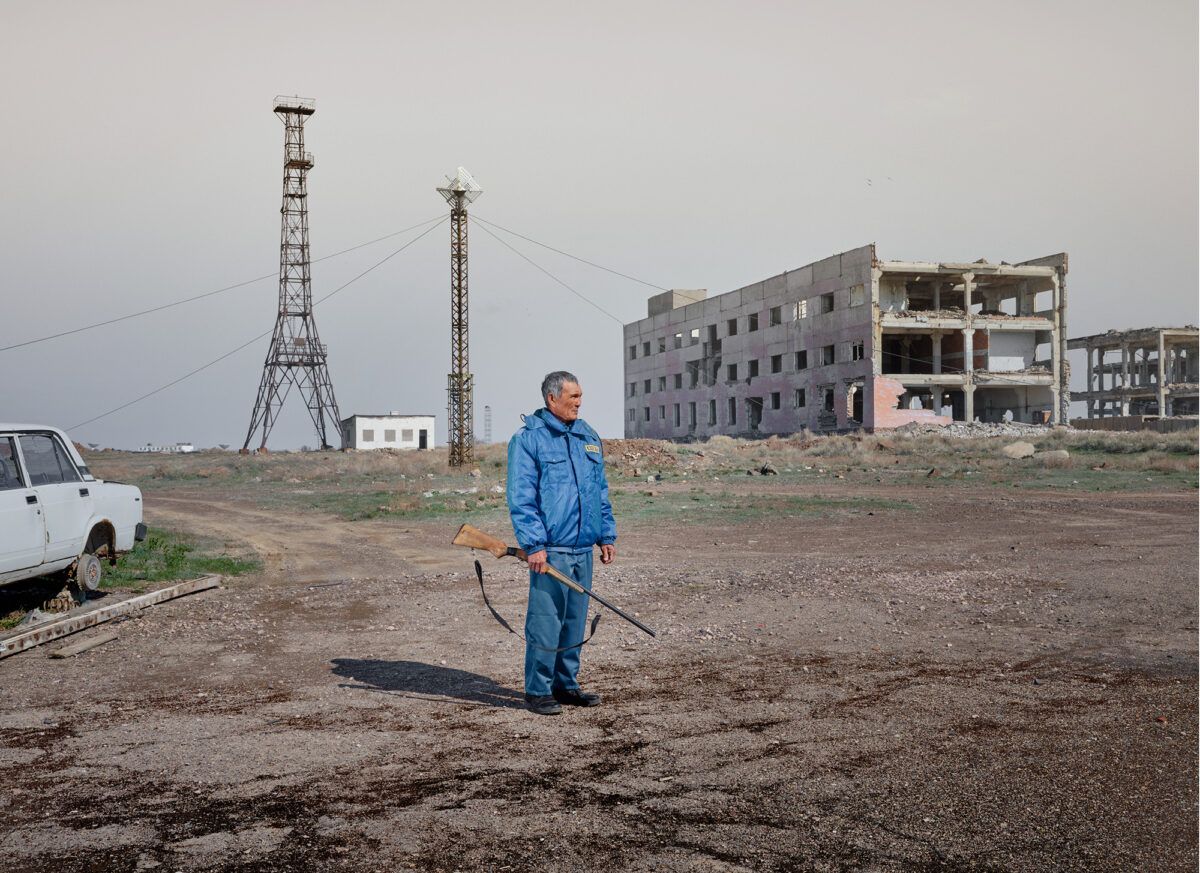
Blue guard © Eddo Hartmann
Location: Online Type: Book Review, Documentary, Landscapes, nuclear, Portraits
Events by Location
Post Categories
Tags
- Abstract
- Alternative process
- Architecture
- Artist Talk
- artistic residency
- Biennial
- Black and White
- Book Fair
- Car culture
- Charity
- Childhood
- Children
- Cities
- Collaboration
- Community
- Cyanotype
- Documentary
- Environment
- Event
- Exhibition
- Faith
- Family
- Fashion
- Festival
- Film Review
- Food
- Friendship
- FStop20th
- Gender
- Gun Culture
- Habitat
- Hom
- home
- journal
- Landscapes
- Lecture
- Love
- Masculinity
- Mental Health
- Migration
- Museums
- Music
- Nature
- Night
- nuclear
- p
- photographic residency
- Photomontage
- Plants
- Podcast
- Portraits
- Prairies
- Religion
- River
- Still Life
- Street Photography
- Tourism
- UFO
- Water
- Zine

Leave a Reply